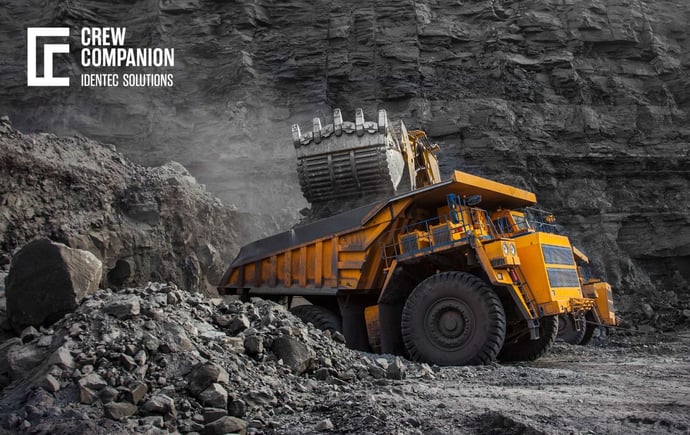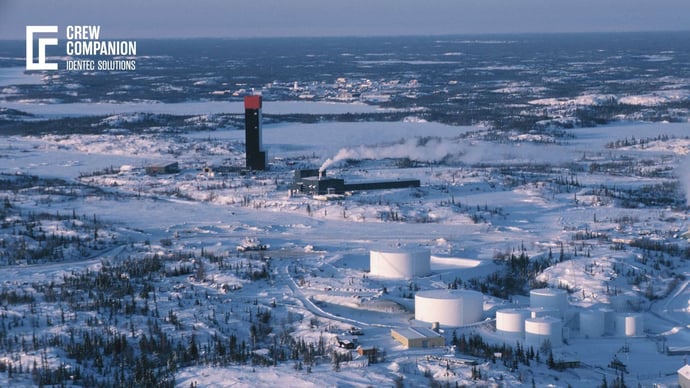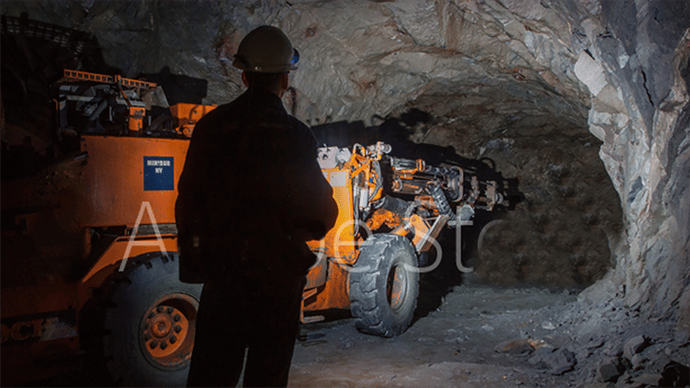Mining Workforce of Tomorrow
| Written by Michal Wozniakowski-Zehenter
The situation is clear: the mining world needs new blood to keep things running smoothly. If recruits don't step up soon, we're looking at problems that could stretch way beyond just the mines. So, what's being done about it? Well, we're taking a closer look at the efforts across Europe and North America to make mining cool again – or at least, a solid career choice. We're diving into what's keeping folks from considering a job in mining and the creative solutions that might turn things around, from making the jobs more appealing to tackling the challenges of getting to these remote worksites.

No video selected
Select a video type in the sidebar.
Why is there a shortage of MINING WORKFORCE?
The mining business has a difficult task, attracting a steady group of people to work for the future, and it's a complicated problem to solve. There are two major obstacles: First, many people don't find the job attractive, and second, the areas where mining operations are active tend to be quite remote. These challenges are deep-rooted -- they relate to how the public views mining work, their desires for personal life and job goals, and how what people expect from their jobs are shifting.
First off, a lot of people think mining doesn't have the greatest image since it's seen as a tough and dangerous job, and it's also famous for taking away time from being with family and buddies because of the long hours it demands. Getting younger people to pick a career in mining is hard -- they're looking for a good balance between work and personal time, they want the chance to move up in their jobs, and they're searching for work that feels meaningful. Plus, caring about the environment is becoming an important issue, and the way mining has hurt the Earth before sure doesn't make it look any better. And, we've also got to consider where the mines are.
A lot of mines are in places that are way off the beaten path, quite a distance from major cities. Since they're so in the middle of nowhere, it's tough to get workers willing to move there. After all, who's thrilled about the idea of going to a small, hard-to-find town where there's barely anything to do? Plus, you'd have to say goodbye to your friends and family, not to mention all the conveniences you're used to in the city. That's important for many people. Sure, the job might pay really well and offer chances to move up in your career--but packing up and moving to a mining location doesn't sound like everybody's cup of tea.
THE FLIP SIDE
Today, people are excited about joining fields that lead the way in new ideas, especially ones where they can be involved with high-technology tools and make a real difference. Mining has a solid chance to grab their attention, but it's not noticeable, and most people don't know about its wonderful progress. While a lot of other jobs might sound boring to someone about technology, many hi-tech projects are starting to happen in mining. Imagine using drones to survey the land, tapping into advanced computing to sift through numbers fast, or working with autonomous machines that do dangerous parts of the job by themselves. These kinds of technological advances could attract those into technology and looking for somewhere surprising to play with their abilities--but a large number of people don't know how much mining has changed. They still think of it as dusty and full of shovelling instead of the high-technology activity it's become recently. An old image that sticks in people's minds is holding mining back. To fix this, there need to be excellent efforts targeted towards telling everyone how mining has become a major player in using new technologies.
The global mining industry saw a 0.26% decline in new job postings related to the future of work in Q2 2024 compared to the previous quarter, according to GlobalData’s Job Analytics. However, when compared to Q2 2023, job postings increased by 12%. This shift highlights fluctuating employment trends within the sector, reflecting evolving workforce demands and industry adaptation to technological advancements. Despite the slight quarterly decline, the year-over-year growth suggests ongoing investment in future-focused roles, signalling long-term changes in the mining workforce. (2)
HOw Popular is MINING With GEN Z?
Unfortunately, the perception of mining is changing among the younger generation. Some schools had to suspend undergraduate engineering courses and adopt a new teaching method by offering mining-relevant training in combination with “on-the-job” learning.
Patrick Foster, Associate Professor in Mine Safety and Director of the Camborne School of Mines said in the interview for Mining Magazine (1): “(For) young people (the mining is) dirty, dangerous and old fashioned. (…) When people see the mining industry, they tend to see it when it goes wrong. Mining doesn't tend to appeal to the current generation of students who are concerned about our planet's future and environment. Those concerns may not be totally unfounded; however, the industry has made significant strides in recent years to address these issues.
The name 'mining engineering' points to a very specific profession and students think this limits their choices and confines them to working in that sector. Geology must be taught to schoolchildren to reinforce the importance of minerals and metals to society,”
Over the past two decades, the number of undergraduate mining students has typically trailed the commodities cycle by about two years. However, in the most recent cycle, mining student enrolments have become disconnected from the industry's performance, leading to a decline in numbers in the UK, US, and Australia.

MINING WORKFORCE: EUROPEAN PROGRAMS
To deal with the problems that mining companies have finding enough workers, Europe has started new plans and projects; they want to make jobs in mining seem better and fix the problem that mines are usually far away from places where people live; they're focusing on making education in mining better, getting businesses and schools to work together, and trying to give the mining world a bit of a makeover.
High-degree schools and technology programs all around Europe are reconfiguring their courses about mining to put in the newest technology out there, eco-friendly ways of doing things, and how to control machines from far away. Schools that a lot of people say are top-the-line Imperial College in London, AGH University in Cracow, Lulea University in Sweden, England's University of Exeter and its special mining school called Camborne, and Freiberg Technical University in Germany, are leaders in this update by mixing in-class materials about earth-friendly mining, bringing computers into everything, and looking after nature. The things they're teaching aren't only about how we do mine nowadays--but it's also getting the attention of people who care about the planet by showing them that mining is an enormous player in keeping the economy green and clean.
European mining companies know there's this big difference between what you learn in school and having a real job. What they're doing is teaming up with colleges and letting students do internships, learning apprenticeships, and even getting work training. It's focused on giving students hands-on chances to practice so when they leave school, starting a job isn't so tough; they want everyone to know this industry's serious about training people who know their related things.
These mining corporations don't want people thinking all they do is dig up the land; they're making efforts to make mining better for the planet, by using cleaner ways; they're educating about these changes and telling us why materials that come out of these mines matter, especially if we want to live in a cleaner, more holiday world. With projects Europe's Raw Materials Alliance innovation push, also authorities are trying to show they do take this matter seriously when it's about responsible mining, which they hope will involve people who want to do good for the Earth and communities.
THE OTHER SIDE OF THE POND
In North America, as in Europe, people are putting in the work to solve the mining industry's job problems by setting up school programs, teaming up with companies, and starting projects that make mining seem better; they're trying to change how people see mining by using new technology and caring more about the environment to draw in fresh workers.
Leading universities and colleges have developed specialized mining engineering and technology programs designed to equip students with the skills needed for the future of mining. For instance, the Colorado School of Mines in the United States and the Norman B. Keevil Institute of Mining Engineering at the University of British Columbia in Canada offer programs that emphasize sustainable mining practices, digital technologies, and environmental stewardship. These institutions prepare graduates for the evolving demands of the mining industry while promoting the sector's shift towards sustainability and innovation and increasing the mining workforce.
Mining companies are teaming up more and more with schools to set up internships and co-op programs that give students hands-on experience; these collaborations are key to showing students how what they're learning can be used in actual mining jobs and to flaunt the high-technology side of the field; these companies also fund research projects, which lets students tackle new ways to solve problems that miners face.
To improve the mining industry's image and attract a broader range of applicants, various organizations and companies in North America have launched campaigns that emphasize the industry's commitment to sustainability and its role in powering the green economy. These campaigns aim to dispel outdated perceptions of mining and highlight the sector's importance in producing materials essential for renewable energy technologies and digital infrastructure.
FAQS
How serious is the mining workforce shortage in the US?
The U.S. is running out of miners. About half the country's mining workforce will retire by 2029, according to the Society for Mining, Metallurgy & Exploration, so there aren't as many people to fill those positions. Meanwhile, rare earth minerals like lithium, cobalt, and copper are in high demand, critical components for electric cars and smartphones. By 2035, Benchmark Mineral Intelligence estimates 384 new mines will be needed to meet demand for electric vehicles.
How to become a miner?
To become a miner for coal, gold, or other minerals, first dig into what mining is all about, and find out what makes it so risky. If you want to be a mining engineer, you've got to get through high school, and then you've got to take mining-focused classes. If you're serious, you've got to get a college degree in mining engineering. The Mine Safety and Health Administration in the States is firm about certificates, especially for health and safety-related things (read more about mine safety equipment, lone worker safety, and underground safety). You can get your hands dirty with real work by doing those basic jobs; an apprenticeship can also help you get structured training. Learn new things, talk to people in mining racks, and maybe become a whiz in a certain mining gig to land better jobs to keep climbing that career ladder.
TAKEAWAY
The industry needs innovative solutions to deal with its mining workforce shortages, not just for now. A shift in perception in the industry, a focus on sustainability, and technology integration will be key to these efforts. By reducing the need for workers to stay in remote locations, remote and autonomous operations could make mining jobs more attractive. With drones, automated machinery, and remote monitoring systems, mining operations can be controlled from urban centres, which appeals to a workforce that values work-life balance and urban amenities. By emphasizing the mining industry's contribution to green energy through the extraction of materials needed for renewable energy technologies, it can align itself with the values of environmentally conscious job seekers. A concerted effort to rebrand mining as a tech-savvy, sustainable, and socially responsible sector can further enhance its appeal. Showcasing efforts in environmental restoration, reduced emissions, and water conservation can help. By engaging the public, the mining industry can change public perceptions by highlighting innovation, technological advancement, and environmental stewardship. These future directions can make the mining industry more attractive and sustainable, ensuring a robust workforce for years to come.
Delve deeper into one of our core topics: Miner Safety
Glossary
The European Raw Materials Alliance (ERMA) is a strategic initiative aimed at strengthening Europe's economic resilience by diversifying supply chains, creating jobs, attracting investments, and fostering innovation in the raw materials sector. It also focuses on training young talent and establishing a robust framework for raw materials and the circular economy worldwide.
ERMA addresses the critical challenge of securing access to sustainable raw materials, advanced materials, and industrial processing expertise. By 2030, it aims to boost raw and advanced material production while promoting circular economy practices, such as improving the recovery and recycling of critical raw materials. These efforts will reduce Europe’s reliance on external sources, support sustainable industrial development, and enhance environmental responsibility. Through innovation and collaboration, ERMA is driving Europe's transition toward a more secure and sustainable raw materials supply chain, ensuring long-term economic and environmental stability. (3)
Sources:
(1) https://www.miningmagazine.com/environment/news/1459375/gen-values-choking-minings-talent-pipeline
(2) https://www.mining-technology.com/dashboards-jobs/futureofwork-hiring-mining-industry/?cf-view
(3) https://single-market-economy.ec.europa.eu/industry/industrial-alliances/european-raw-materials-alliance_en
Note: This article was updated on the 11th of February 2025

Author
Michal Wozniakowski-Zehenter, Marketing Manager
Michal Wozniakowski-Zehenter is an experienced marketing and project management professional. He spent most of his career on projects with a strong focus on digital marketing and event management. He is a very active voice representing offshore and mining industries through social media channels. Michal writes mainly about offshore oil and gas, renewable energy, mining and tunnelling. Compiling and sharing the knowledge within industries is one of his goals.




